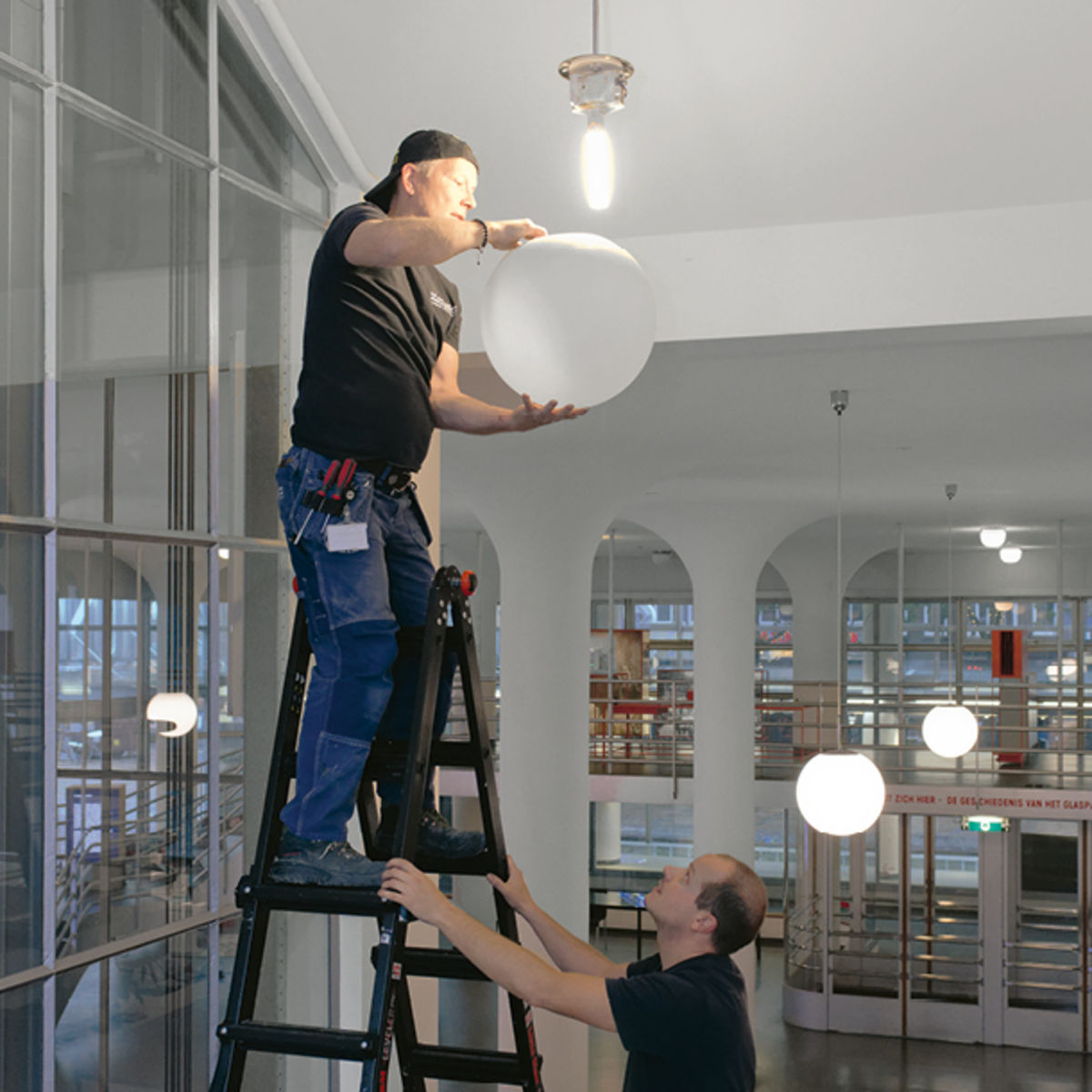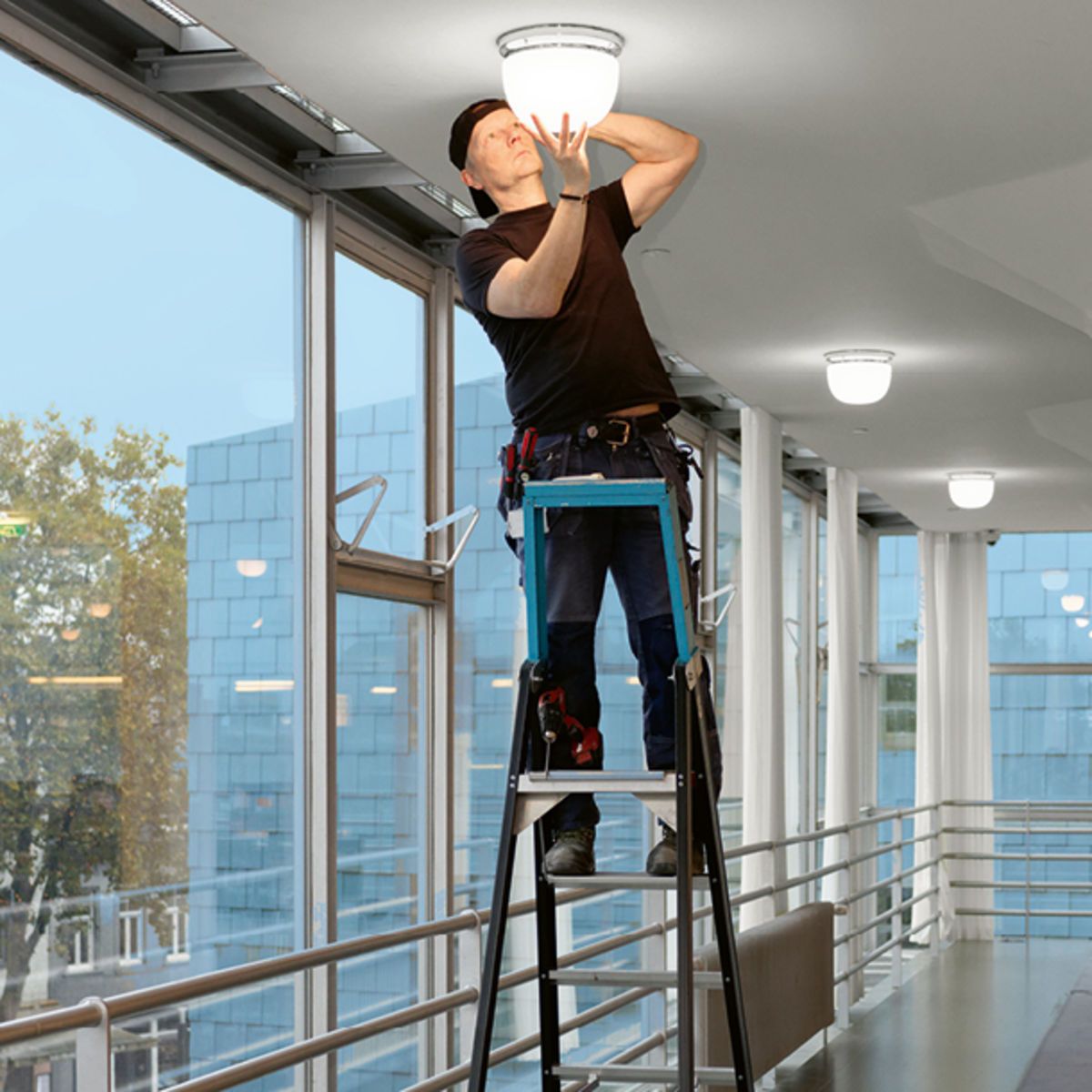
The "Glaspaleis Heerlen" is an impressive transparent forum in the centre of Heerlen, in the south-east of the Dutch province of Limburg. Two decades after installation, 200 BEGA indoor luminaires continued to provide reliable service at all times in the cultural centre. However, energy-efficient developments were required.
The modernisation project in the Glaspaleis underlines BEGA’s philosophy of producing durable building details – not disposable products. The components are replaceable and the distinctive illumination showcases the architecture.
The Union International d’ Architecture features the "Heerlen Glaspaleis" in its list of the “1000 most important buildings of the 20th century”.
Sophisticated architecture, countless unique features and the sustainability of the entire project highlight the original requirement of businessman and client Peter Josef Schunck:
“Extraordinary” design specification Architect Frits Peutz received the unusual brief from Schunck in the 1930s: "Design a department store that stands like a stacked marketplace next to the market!"

A concrete structure and hanging glass façades created this covered marketplace. Mushroom-shaped concrete columns support the ceilings. Fabrics and clothing were the focal point of the textile department store, which was intended to make the entire warehouse accessible to customers. The building was designed to function as a salesroom and as a warehouse simultaneously – with no dividing walls. The space was full of natural daylight, making it easier to inspect the goods. The family of the department store owner, Schunck, lived in the penthouse on the roof for decades.
After being converted into office space with newly installed walls and changes to the glass façade, the building simply looked like a massive, unreal block. An initiative launched in 1993 saved the building, which had been earmarked for demolition. Recognition as a valuable architectural monument in 1995 was a step in the right direction: the city of Heerlen bought the avant-garde building to turn it into a cultural centre.

Architects Jo Coenen and Wiel Arets were awarded the contract to remodel the building in line with its listed status. From the turn of the millennium, they gave the Glass Palace back its original captivating effect – and fitted sustainable BEGA illumination, which was still providing reliable service more than two decades later.


However, the triumph of LED light sources has now opened up the opportunity to significantly reduce energy costs. The ceiling luminaires and spherical pendant luminaires, some of which also fulfil emergency lighting functions, were fitted with LED conversion kits during operation. With even more harmonious lighting than with the previous lamps, the lighting experience planned decades ago, and later modernised, will continue to delight visitors to the cultural centre in the future.
Referencje
Architects: Frits Peutz, Heerlen
Lighting design barrier-free access: Jo Coenen, Maastricht and Wiel Arets, Amsterdam






